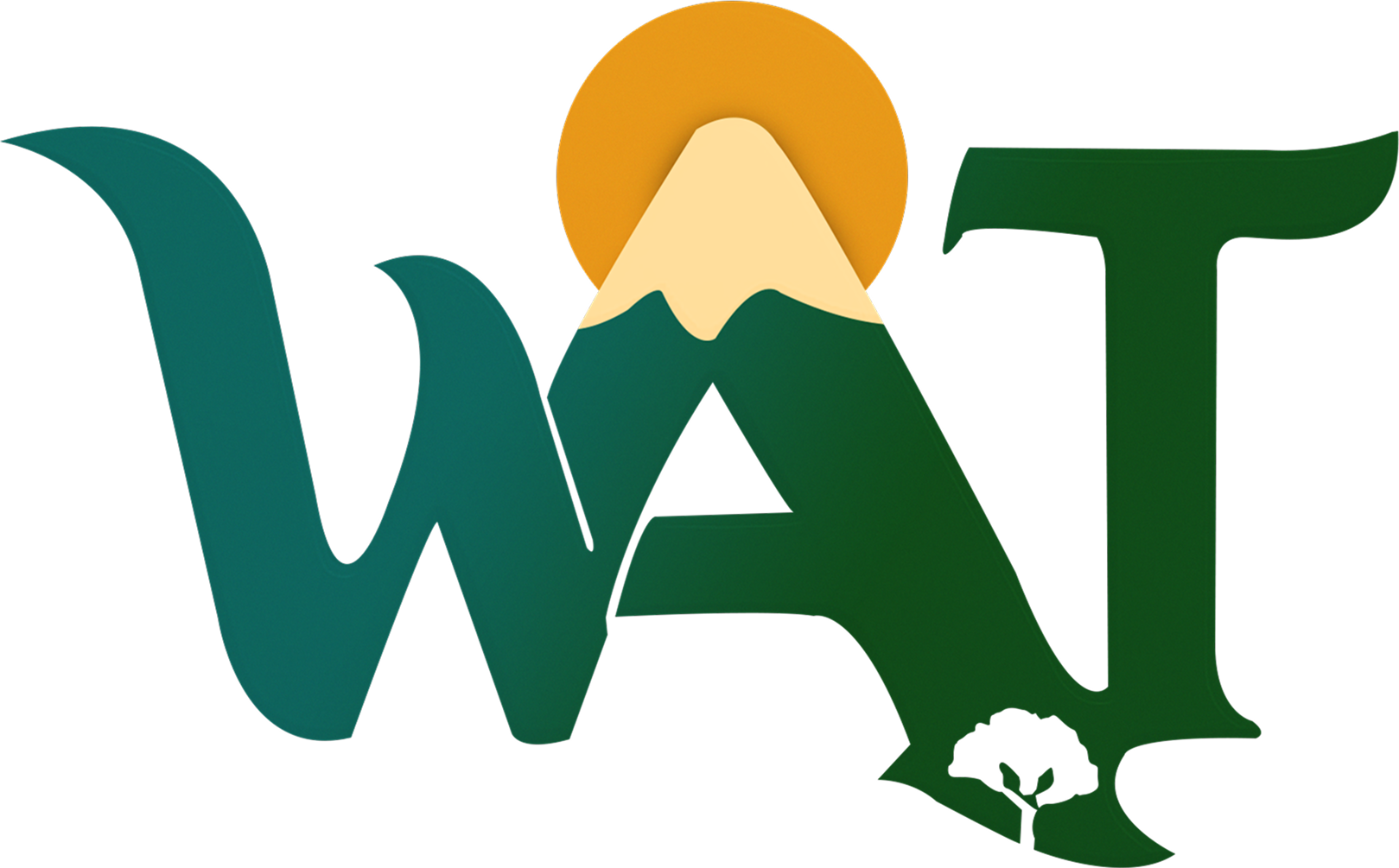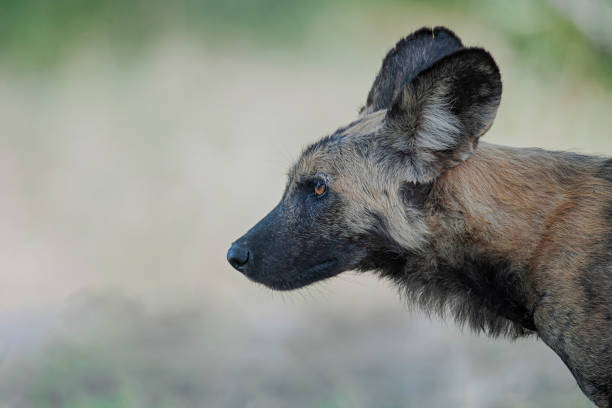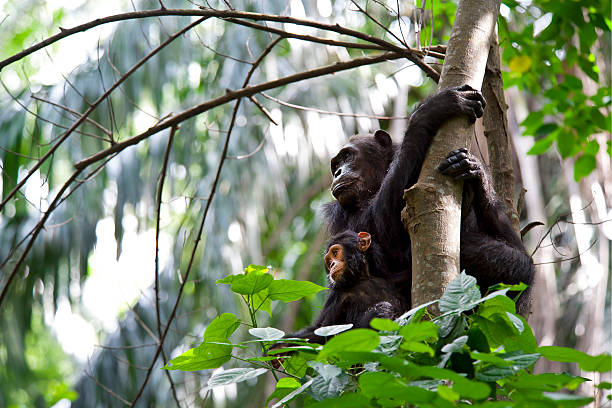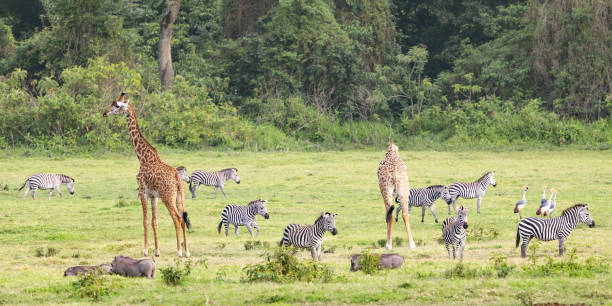Conquering the Summit of Mount Kilimanjaro

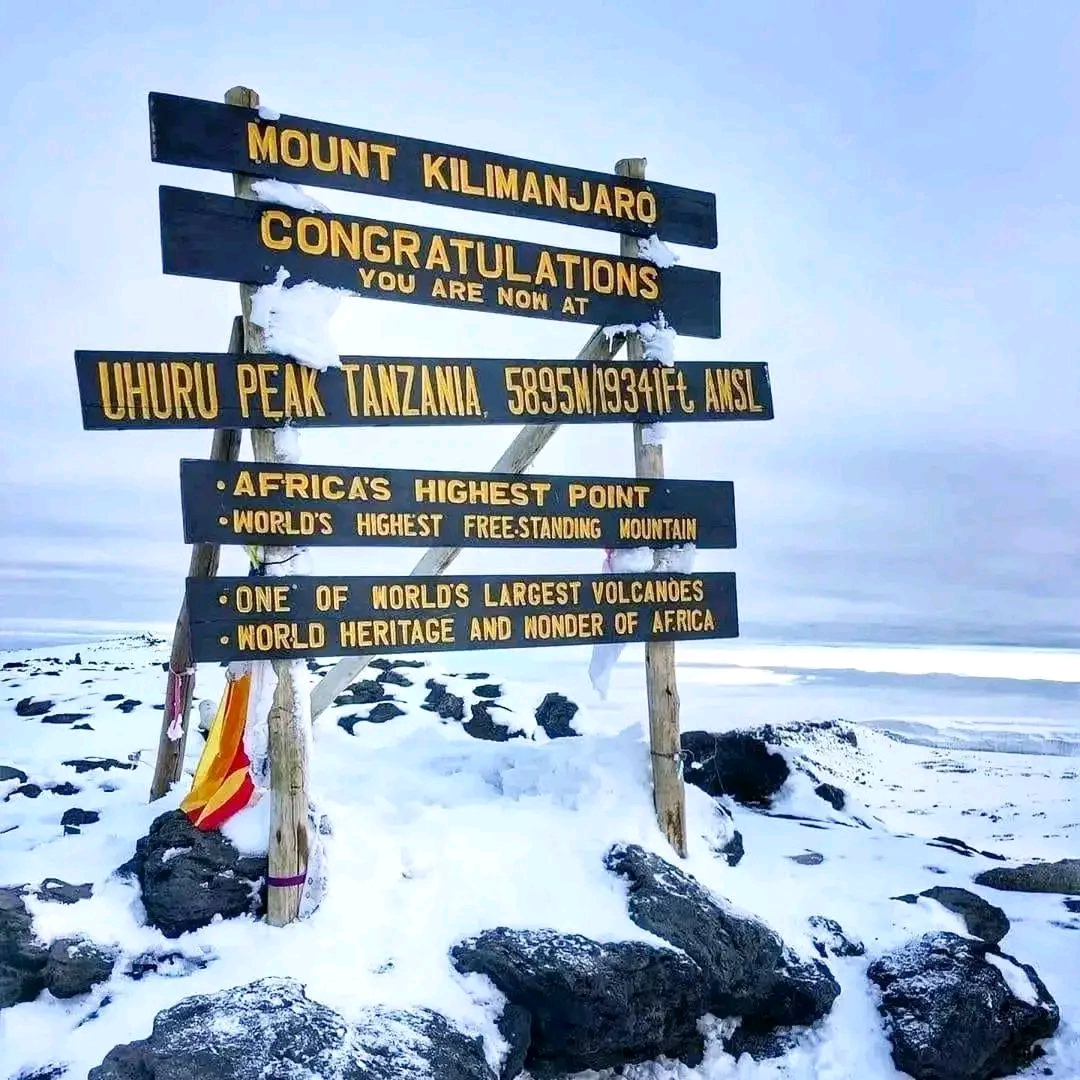
Standing atop the African continent, with the curve of the Earth visible on the horizon, is a dream for adventurers worldwide. This dream has a name: Uhuru Peak, the true summit of Mount Kilimanjaro.
This guide is your first step towards that incredible moment, offering essential tips for a safe and successful journey. Reaching Uhuru Peak is more than a climb; it's a transformative experience.
This journey will test your physical and mental limits, but the reward is a sense of accomplishment that lasts a lifetime.
Whether you are considering the popular Machame or the scenic Lemosho route, preparation is the key to conquering Uhuru Peak. From essential gear to acclimatization strategies, we’ll cover everything you need to know for your Kilimanjaro adventure.
Ready to start planning? Book a Kilimanjaro preparatory guide with us to get personalized advice for your trek to Uhuru Peak.
Introduction to Mount Kilimanjaro
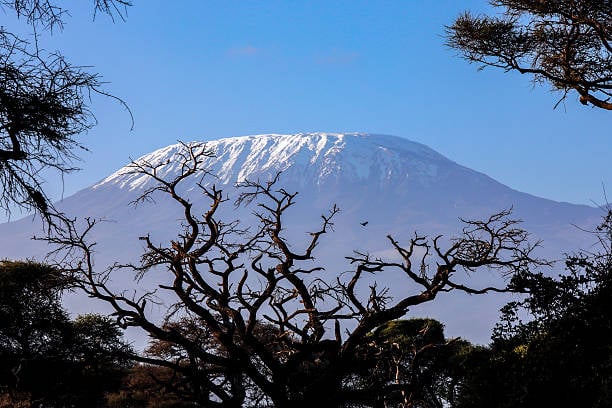
Mount Kilimanjaro is a dormant volcano and the highest mountain in Africa, making it one of the famed Seven Summits.
As the world's highest free-standing mountain, it rises in breathtaking isolation from the surrounding coastal scrubland, creating a dramatic and unforgettable landscape in East Africa. For many, the goal is not just to see this majestic peak, but to stand on its very top.
The ultimate destination for climbers is Uhuru Peak, the highest point on the Kibo cone's crater rim. Reaching an elevation of 5,895 meters (19,341 ft) above sea level, it represents the pinnacle of a challenging and rewarding trek. This journey takes you through five distinct climate zones, from lush rainforest to an arctic summit.
Where is Kilimanjaro?
Located in northern Tanzania, Mount Kilimanjaro lies just south of the border with Kenya. This icon of East Africa is the centerpiece of Kilimanjaro National Park, a UNESCO World Heritage site dedicated to preserving its unique ecosystem and natural beauty. The adventure to climb Mt Kilimanjaro begins in the nearby towns of Moshi or Arusha.
Quick facts
Elevation: The highest point, Uhuru Peak, is 5,895 meters (19,341 ft) above sea level (Wikipedia).
Volcanic Cones: The mountain is comprised of three distinct volcanic cones: Kibo (the highest and central cone), Mawenzi (5,149 m), and Shira (4,005 m) (Wikipedia).
Best Seasons: Climbing is possible year-round, but the best conditions are during the dry seasons, typically from June to October and from December to March (Climbing Kilimanjaro).
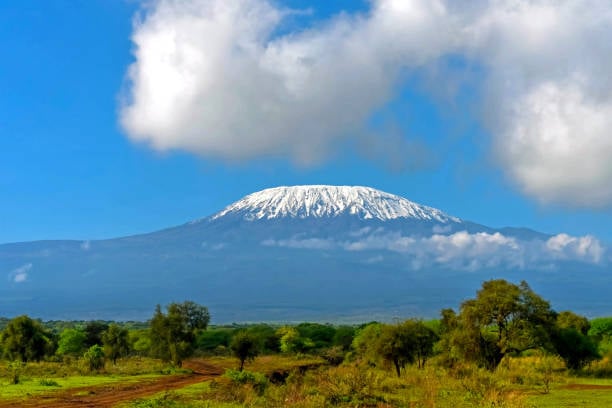
Geology and Geography
Mount Kilimanjaro’s dramatic structure is a testament to its volcanic origins. The mountain is a stratovolcano, built up by countless layers of hardened lava, tephra, and volcanic ash.
Its three cones were formed by distinct periods of volcanic activity over a million years, with the now-dormant Kibo being the youngest and tallest.
The summit on the Kibo cone is not a simple peak but a massive caldera, a large crater formed by a volcanic collapse. Within this caldera lies the Reusch Crater, a smaller inner crater approximately 1.3 km in diameter.
The journey to Uhuru Peak takes you along the rim of this magnificent geological feature, offering views of the mountain's remaining glaciers.
The Kibo cone, Reusch Crater and the Ash Pit
Inside the Reusch Crater is another concentric pit known as the Ash Pit, which is about 130 meters deep (Ultimate Kilimanjaro). For the most intrepid adventurers, it is possible to visit the Reusch Crater and even descend into the Ash Pit. However, this requires a special permit, an overnight stay in the crater, and exceptional acclimatization due to the extreme high altitude and health risks involved.
A stark reminder of the changing climate is the rapid retreat of Kilimanjaro's iconic glaciers. These ancient ice fields have lost more than 85% of their mass since 1912, a process that continues today. Seeing them is a powerful and fleeting experience. The view from the crater rim towards Uhuru Peak is a geological marvel.
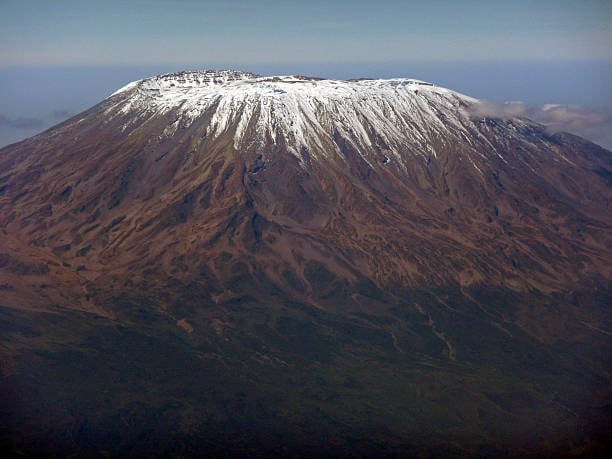
Preparation for Climbing
Proper preparation is the single most important factor for a successful summit of Uhuru Peak. The challenge of climbing Kilimanjaro is less about technical skill and more about endurance and acclimatization to high altitude. Embarking on a journey to climb Mount Kilimanjaro requires thoughtful planning, from physical training to assembling the right gear.
Most treks take between six and nine days, with longer routes offering a better chance of success. Your team will include guides and porters who carry the bulk of the equipment, including tents, food, and safety gear. Even experienced climbers must respect the mountain's challenges, particularly the effects of high altitude.
A slow and steady ascent is critical. Your body needs time to adjust to the lower oxygen levels. This is why choosing a route of at least seven days is highly recommended. Routes like the Machame and Lemosho are designed to help your body acclimatize by following a "climb high, sleep low" profile, significantly increasing your chances of reaching Uhuru Peak.
Essential gear checklist
Layered Clothing: Thermal base layers, fleece mid-layers, and a waterproof/windproof outer shell are non-negotiable.
Footwear: Broken-in, waterproof hiking boots with good ankle support are your most critical piece of gear.
Sleeping Bag: A four-season sleeping bag rated to at least -10°C (14°F) is essential for cold nights at camp.
Headlamp: A bright headlamp with extra batteries is crucial for navigating in the dark, especially on summit night.
Water Bottles/Hydration Pack: You should be able to carry at least 3 liters of water. A durable water bottle is a must.
Daypack: A 30-40 liter daypack to carry your daily essentials like water, snacks, layers, and sunscreen.
Medicine & altitude - what to carry
Always consult your doctor before climbing Kilimanjaro. A personal first-aid kit should include basics like blister treatment, pain relievers, and any personal medications. Many climbers consider carrying Acetazolamide (Diamox) to help prevent and treat altitude sickness, but this should be discussed with a medical professional. Reputable operators will carry emergency oxygen and a comprehensive medical kit.
Choosing a Route
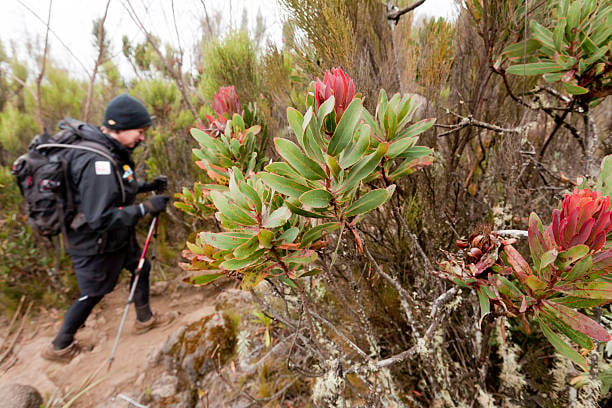
There is no single "best" route to climb Mount Kilimanjaro; the right choice depends on your fitness level, budget, and preference for scenery versus solitude. Routes vary in length, difficulty, and acclimatization profile. A longer route with a more gradual ascent dramatically increases your chance of successfully reaching Uhuru Peak.
Generally, routes can be categorized by their approach. Some, like the Marangu route, are more direct and can be completed faster, while others, like the Lemosho route or Northern Circuit, are longer and more scenic. Each route offers a unique perspective on the mountain's diverse ecosystems.
Lemosho route
The Lemosho route is highly recommended for its beautiful scenery and excellent acclimatization profile. Typically an 8-day trek, it offers a high success rate by allowing for a gradual ascent. The route begins on the western side of the mountain, traversing the stunning Shira Plateau before joining the Machame route. This is a top choice for those wanting a comprehensive Kilimanjaro experience on their way to Uhuru Peak.
Machame route
Known as the "Whiskey Route," the Machame route is the most popular choice for climbing Kilimanjaro. It is a challenging but rewarding 7-day trek with excellent "climb high, sleep low" opportunities for acclimatization. The scenery is varied and spectacular, though it can be crowded during peak season. Its high success rate makes it a classic and reliable path to the summit.
Northern Circuit routes
For those seeking solitude and the best possible acclimatization, the Northern Circuit routes are unparalleled. As the longest route, typically 9 days, it circles the northern flank of the Kibo cone, offering quiet trails and unique perspectives of the mountain. Its length provides maximum time for your body to adjust to the altitude, giving it the highest success rate of all routes.
Marangu route
Nicknamed the "Coca-Cola Route," the Marangu route is the oldest and most established path. Its main distinction is that it offers sleeping huts instead of tents for accommodation. While this offers more comfort, the route's shorter 5 or 6-day itinerary provides a poor acclimatization profile, leading to a lower success rate for reaching Uhuru Peak.
Climbing the Mountain
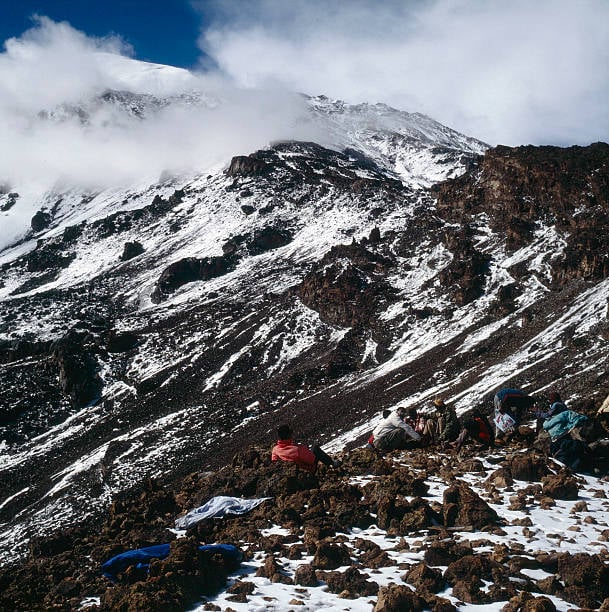
The journey to the summit is a day-by-day progression through Kilimanjaro's unique ecological zones. The final push, known as summit day, is the most demanding part of the entire climb. It begins around midnight, with a slow, steady ascent under a canopy of stars, aiming for a spectacular sunrise at or near Uhuru Peak. Reaching the summit is a testament to your endurance.
Your climb starts in the lush montane rainforest at the mountain's base, alive with sounds and the possibility of seeing Colobus monkeys. As you ascend, the forest gives way to the heath and moorland zone, characterized by giant heathers and otherworldly Senecio plants. Above this lies the stark and beautiful alpine desert, a high-altitude landscape with sparse vegetation and dramatic temperature swings.
The final ascent takes you into the arctic zone, a world of rock, ice, and snow. The path zigzags up the steep scree slope of the Kibo cone. The slow pace, or "pole pole" (Swahili for "slowly, slowly"), is crucial for conserving energy and managing the effects of the thin air. For all hikers, this is the ultimate test before the reward of reaching Uhuru Peak.
Summit day timeline
11:30 PM: Wake up call, final gear check, and a light snack.
12:00 AM: Begin the slow and steady ascent from your final camp (e.g., Barafu Camp).
5:30 AM - 6:30 AM: Reach Stella Point (5,756 m) on the crater rim, a major milestone.
6:30 AM - 7:30 AM: Make the final, gentler push along the crater rim to Uhuru Peak, often coinciding with a breathtaking sunrise.
7:30 AM onwards: Celebrate at the summit of Uhuru Peak, take photos, and begin the descent.
What to do at the top
Once you've achieved the incredible goal of reaching Uhuru Peak, your time at the top will be brief due to the high altitude. This is the moment for that iconic photo with the famous wooden sign. Take a moment to absorb the panoramic view, have a quick energy-boosting snack, and check in with your guide about how you're feeling before beginning the descent.
Descent tips
The descent is often faster than the climb but can be tough on the knees. Use trekking poles to reduce impact. It's important to rest adequately at camp before continuing the descent to a lower elevation camp. Remember to keep hydrating, as you will still be at a significant altitude.
Safety Considerations
Your safety on Mount Kilimanjaro is paramount. The primary risk is related to high altitude, which can affect anyone regardless of age or fitness level. Understanding the risks and choosing a reputable tour operator are the most important safety decisions you will make for your climb to Uhuru Peak.
Acute Mountain Sickness (AMS) is common, with symptoms including headache, nausea, and fatigue. In rare cases, it can progress to life-threatening conditions like High Altitude Cerebral Edema (HACE) or High Altitude Pulmonary Edema (HAPE). Listening to your guides and your body is critical. Never ascend with worsening symptoms.
A key safety measure is to choose an operator that prioritizes porter welfare and provides experienced, certified guides. Your guides are trained in first aid and can recognize and treat altitude sickness. They will monitor your condition throughout the trek, often using a pulse oximeter to check your blood oxygen levels.
Finally, have a solid emergency plan. Ensure your operator has reliable communication methods and a clear evacuation protocol. Beyond altitude, other risks include sun exposure (UV rays are intense at high altitude), dehydration, and cold. Proper gear, hydration, and sun protection are essential safety components for all experienced climbers and newcomers alike. Your goal is a safe and successful journey to Uhuru Peak and back.
The Summit Experience
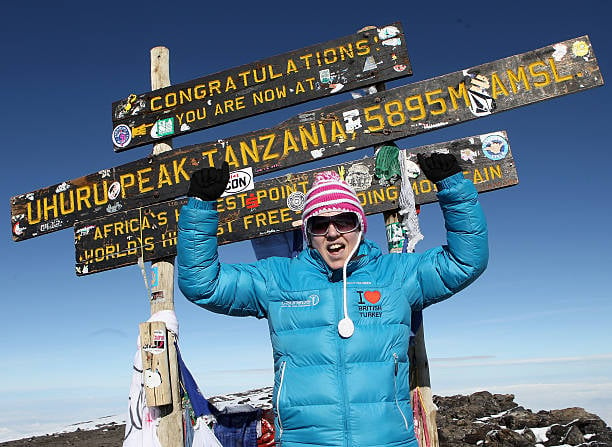
Reaching Uhuru Peak is an emotional and deeply personal moment. After days of trekking and a grueling final ascent, standing at the highest point in Africa is a profound achievement. As the sun rises, it casts a warm glow across the vast plains below and illuminates the mountain's remaining glaciers, creating a scene of unparalleled beauty.
The feeling is a mix of exhaustion, elation, and awe. You are literally on top of the continent, with a 360-degree view that seems to stretch on forever. This is the moment you have been working towards—the culmination of your perseverance and training. It is a powerful sense of accomplishment.
This is also the ultimate photo opportunity. The famous wooden sign at Uhuru Peak, reading "Congratulations! You are now at Uhuru Peak, Tanzania, 5895m," is a coveted backdrop for a summit photo. Capturing this moment is a way to remember the incredible journey and the challenges you overcame to get there. After a few minutes of celebration, the descent begins, but the memory of standing at Uhuru Peak lasts a lifetime.
Overcoming Challenges
The journey to climb Mount Kilimanjaro is as much a mental challenge as it is a physical one. The primary physical hurdle is the high altitude, which makes every step feel more strenuous. The cold, especially on summit night when temperatures can be freezing, adds another layer of difficulty.
Perseverance is key. There will be moments of doubt and exhaustion. The best strategy is to break the climb down into small, manageable goals: just make it to the next rest break, or the next landmark. Rely on your guides and the support of your group.
Mental challenges are just as significant. The long hours of walking, the simple camp life, and the physical discomfort can be draining. A positive mindset, focusing on the incredible scenery and the goal of reaching Uhuru Peak, can make all the difference. Pacing, proper hydration, and getting as much sleep as possible are your best tools for overcoming these obstacles.
Staying on Track
One of the most repeated phrases on the mountain is "pole pole," which means "slowly, slowly" in Swahili. This is the golden rule for a successful climb. Walking at a slow, deliberate pace conserves energy and allows your body the best possible chance to acclimatize to the altitude. Trying to rush will only increase your risk of altitude sickness.
For all climbers, staying with your group and following the guidance of your lead guide is crucial. The daily schedule, including meal times, walking pace, and rest stops, is designed for safety and success. Trust the expertise of your guides; they have led countless groups to Uhuru Peak and know the mountain intimately.
It is important to communicate openly with your guides. If you are feeling unwell or struggling with the pace, let them know. They can offer assistance, adjust the walking speed, or assess your condition. The entire team (guides, porters, and fellow climbers) is there to support one another on the shared journey to the summit.
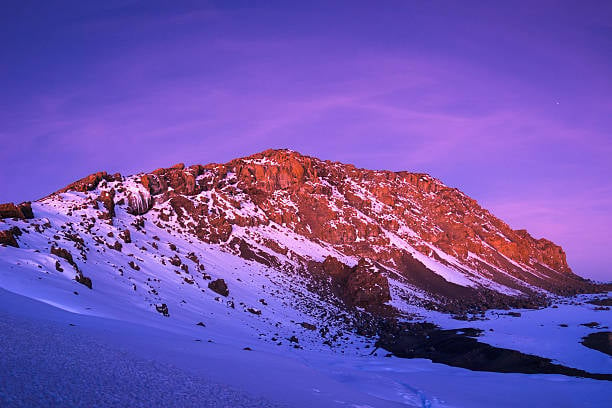
What to Expect
The trek to Uhuru Peak is a journey through dramatically different worlds. You will start in a warm, humid rainforest, surrounded by lush greenery. As you ascend, the environment transforms into an open moorland with giant, alien-like plants.
Higher still, you will enter the alpine desert, a stark, lunar-like landscape where only the hardiest vegetation survives. The final push to the summit takes you into an arctic zone of rock, scree, and, depending on the season, snow. The weather can change in an instant, from bright sun to cold wind and fog.
Be prepared for a wide range of temperatures, from hot and sunny during the day at lower altitudes to well below freezing at night and on the summit. The glaciers at the top are a magnificent sight, but it is a poignant one, as they are rapidly disappearing (PNAS). Expect a physically demanding but visually stunning adventure on your quest for Uhuru Peak.
Logistics and Planning
Organizing your trip to climb Mount Kilimanjaro requires careful planning. The tourism industry in Tanzania is well-developed, with many reputable tour operator companies to choose from. It is legally required to climb with a licensed guide, making the choice of operator your most important decision.
Book your trip well in advance, especially if you plan to travel during the peak seasons (June-October and December-March). A typical climb requires a minimum of six days on the mountain, but 7 to 9-day trips are highly recommended for better acclimatization and a higher chance of reaching Uhuru Peak.
Permits & Park Fees: Your tour operator will handle all necessary permits and park fees, which are included in the total cost of your trip.
Best Months: The dry seasons offer the best weather for climbing. June to October is generally cooler and very dry, while December to March is slightly warmer.
Airport & Transfers: You will fly into Kilimanjaro International Airport (JRO). Most operators include airport transfers and pre/post-climb accommodation in their packages.
Booking Lead Time: It is advisable to book your climb at least 3-6 months in advance to secure your spot with a quality operator and to allow ample time for physical preparation.
Booking Lead Time: It is advisable to book your climb at least 3-6 months in advance to secure your spot with a quality operator and to allow ample time for physical preparation.
Booking Lead Time: It is advisable to book your climb at least 3-6 months in advance to secure your spot with a quality operator and to allow ample time for physical preparation.
Physical Conditioning
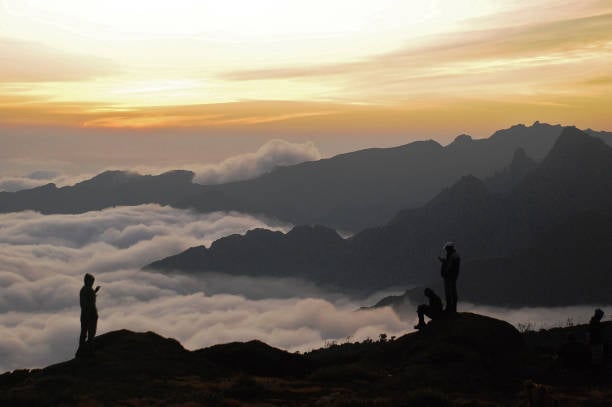
While you don't need to be an elite athlete, good physical conditioning is essential for a safe and enjoyable climb.
The trek involves long days of walking at a slow pace, but the high altitude makes it feel much more strenuous. Your training should focus on cardiovascular endurance, strength, and hiking-specific conditioning.
A consistent training regimen in the months leading up to your trip will pay dividends on the mountain. The goal is to prepare your body for multiple consecutive days of hiking for 4-8 hours a day, with a very long summit day. This training will be crucial for reaching Uhuru Peak.
6-Week Training Sample Plan:
Cardio (3-4 times/week): Focus on activities like running, cycling, or swimming for 45-60 minutes to build your aerobic base. Incorporate interval training to improve your body's efficiency with oxygen.
Strength (2 times/week): Strengthen your legs, core, and back. Exercises like squats, lunges, and planks will build the muscle needed to support you on long trekking days.
Long Hikes (1 time/week): This is the most important part of your training. Find local trails and complete progressively longer hikes, ideally with some elevation gain. Practice by walking with the daypack you plan to use, loaded with about 10kg (22 lbs) of weight.
Ready to climb? Check our route comparison and book now to begin your journey to Uhuru Peak!
Quick FAQs
Is Uhuru Peak the top of Kilimanjaro?
Yes, Uhuru Peak is the highest point on Mount Kilimanjaro and the entire continent of Africa. It stands at an official elevation of 5,895 meters (19,341 feet) above sea level.
How hard is Uhuru Peak?
Climbing to Uhuru Peak is a significant physical challenge, primarily due to the high altitude. The trek itself is a non-technical walk, but the low oxygen levels make it strenuous, requiring excellent physical conditioning and proper acclimatization.
Why is it called Uhuru Peak?
"Uhuru" means "Freedom" in Swahili. The peak was named in 1961, the year of Tanzania's independence from Great Britain, to celebrate this freedom and mark the new nation's identity.
What are the three peaks of Kilimanjaro?
Mount Kilimanjaro is composed of three distinct volcanic cones. They are Kibo (the highest, on which Uhuru Peak is located), Mawenzi, and Shira.
How long can you stay at Uhuru Peak?
Due to the extreme altitude and thin air, climbers typically spend only 10-20 minutes at the summit of Uhuru Peak. This is enough time for photos and to savor the moment before beginning the necessary descent.
What is the view from Uhuru Peak like?
The view from Uhuru Peak at sunrise is breathtaking. You can see the curvature of the Earth, the vast plains of Tanzania and Kenya stretching below, and the mountain's own shadow cast upon the clouds.
Is there snow on Uhuru Peak?
Yes, the summit area and the Kibo crater often have snow and are home to large glaciers. The amount of snow varies by season, but you should always be prepared for arctic conditions at Uhuru Peak.
Do I need technical climbing skills for Uhuru Peak?
No. All the popular routes to Uhuru Peak are considered trekking routes. You will not need ropes, harnesses, or any technical climbing equipment. The main challenge is the altitude, not the terrain.
What does "pole pole" mean?
"Pole pole" (pronounced poh-lay poh-lay) is a Swahili phrase meaning "slowly, slowly." It is the mantra of the mountain, reminding climbers to maintain a slow, steady pace to conserve energy and acclimatize properly.
